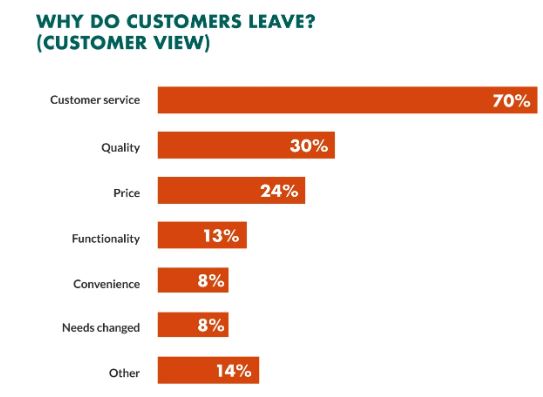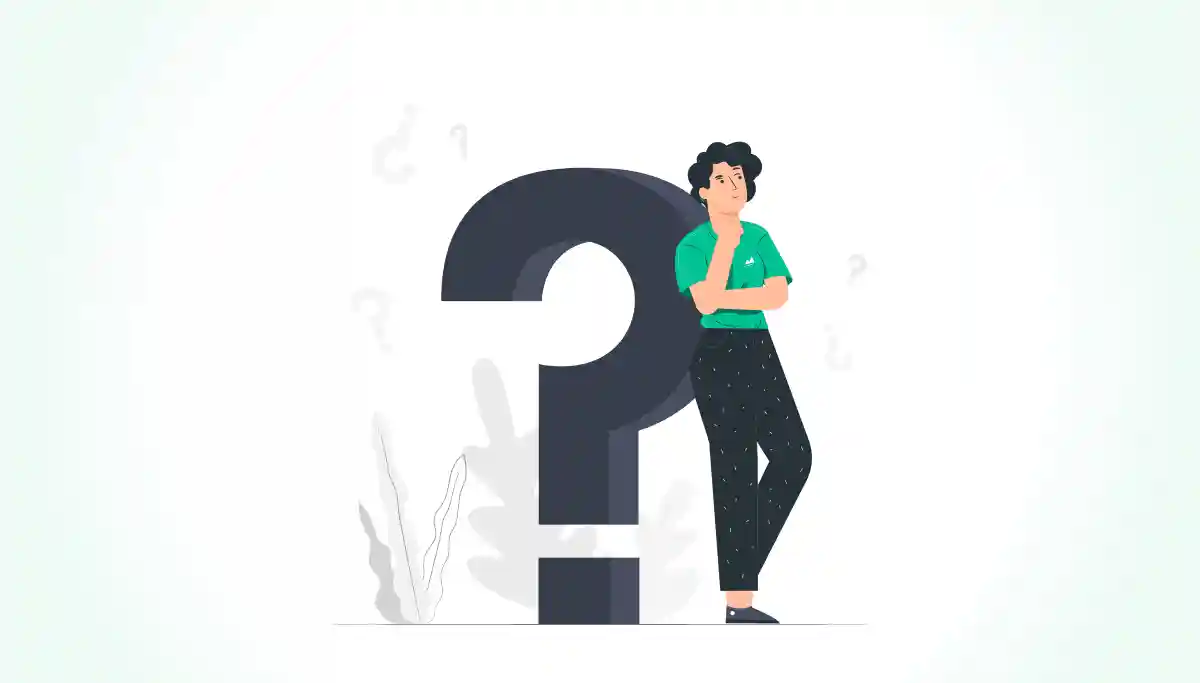There is not a single business that has never lost a customer. Now, there are various reasons why a customer might leave your business. Still, in the case of Saas industries, where the competition is cut-throat, it is very easy for customers to switch if they are unsatisfied with your product. This is called customer churn.
The impacts of customer churn are high on a business’s revenue and profits. You’ll be surprised to know that while customer retention is a major pathway to growing a business, 2 out of 3 companies have no strategy to prevent customer churn.
You do not sustain a company if you keep losing out on customers; hence a wild miss and hit isn’t going to save anything long-term. For that, you need a well-planned strategy to predict and combat customer churn.
What is the Customer churn rate and why should you track it?
Customer Churn rate is the percentage of customers likely to discontinue using your product or service during a specific period.

So, if you had 1,000 subscribers at the beginning of 2022 and lost 30 of them at the end of the year, your churn rate would be 3%. ( 30/1000) *100 = 3%
It is no news that retaining a customer is less expensive than acquiring new clients. Tracking product usage leads to identifying the factors that result in the customer unsubscribing to your services. In this blog, we’ll talk about how tracking the churn rate results in preventing revenue loss, lower customer acquisition costs, reducing marketing and sales expenses, and higher quality customer services.
Reasons why customers churn.
- Perceived ROI– As important as the interface is, customers do not sign up for your product just because it looks appealing. They subscribe because they are looking to derive success value for their business. Studies have shown that the major segment of customer churn happens before the customers achieve their first success. Onboarding a customer is just the first step. What prevents customers from churning is when your product acts as a tool to help attain their business objectives.
- Low Adoption – A customer signing up for your service will only grasp some of your platform’s benefits. If the customer does not understand your product, he will have a low engagement rate leading to churn. A major reason why this happens is that they do not know how to “use” the product to attain maximum utilization. If a customer fizzles out on engagement with your product after a certain time period, it’s time to reach out to them before they jump to the other side.
- Poor Integration – Every SaaS company has some or the other technical debt, and while it is practically impossible to fix every bug, dedicating ample time to development is a core necessity. When a customer signs up for your product or service, they want to generate revenue. But when your platform has bugs, glitches, or downtime, they lose money and productivity. Taking time to research and develop the existing software is more essential than upgrading and expanding, reflecting your customer churn rate.
- Customer Service – In an ever-dynamic industry, small issues can turn into big matters if they block the company from doing business. And it takes one second to unsubscribe and switch to a competitor’s product if your customer thinks they can provide a better service. Even tech-savvy clients sometimes fall into the pit hole of wading through confusing, complicated words, and having to deal with bots can only escalate the angst. Poor customer service leads to high customer churn in various SaaS industries.
What is the Churn prediction model and how does it help?
Churn prediction is the strategy of analyzing data to detect customers who are likely to back out from your services. There are various customer churn algorithms to help identify the churn but on top of the list is KNN. When a new customer is presented, this algorithm looks through the customer success platform for customers who are most similar to the newly acquired. It ranks it in the category of existing customers and predicts if or not he is likely to churn.
For example, let’s say that based on your CRM data, you know that customers you’ve lost in the past were those who were unhappy with the customer service of your product. That tells you that any current customers who are unhappy with your customer service might decide to unsubscribe from your platform.
Let’s devise a toolkit to help predict customer churn and customize it for your company!
- Reliable customer segmentation- To start, we need to segregate our entire database into well-channeled segments. These segments can vary in different aspects like the individual engagement of a customer, how often they reach out for support services, the time spent on each feature (inclusive but not limited to the login/log out time), and/or any various field like which device they access your service from, etc. The data extracted and segmented should be from a specific time frame (say, 1 month), and the next steps should be followed accordingly.
- Continue with manual data analysis or use a prediction service- Now that you have collated the data, it is time to bring the big guns out. SaaS today is backed up with Machine learning and AI; once the segmentation is complete, all you have to do is upload the CSV file in any of the predictive services (Google Cloud ML Engine and BigML are two of our top favorites) and let them do the rest. You’ll end up with a tree-like visualization of your model that’ll give an overview of if a customer has churned or not. Likewise, you can configure the output settings and predict the list of customers at risk of churning.
- Save the customer- Once you have a collated list of your customers varying from high to low on the risk exposure graph, you have to reach out to them with customized strategies to keep them on board.
Schedule a demo with one of our experts to take a deeper dive into Churn360
Book a demo
How to prevent customer churn?
-
- Strengthen Customer relationships: Customer engagement is a key highlight of tracking churn and building long customer relationships. Customers with low engagement with your product are more likely to leave because it highlights that they aren’t deriving sufficient value from your product. It is important to make the customer aware of the key functional benefits of your product. They need to be constantly reminded of regular news updates, such as announcements of deals, special offers, or upcoming upgrades. For the same, use various channels to reach out to consumers. According to a report by Marketo, the most efficient customer engagement channel is email marketing. Actively track the customer journey across your product, and educate the customer of various features and actions they might be missing out on to derive optimum utilization.
- Prioritizing requested value. : Data is useful only when you truly know how to serve it. It takes information, intelligence, and implementation to execute big ideas. The customer feedback forms need to be used in case of incompetent and slow service, which is why the customers tend to switch to your alternative. A study by providesupport.com shows that the key reason why churn happens is because of poor quality customer service. Not only will they leave, but they’ll also end up spreading negative experiences among their peers that’ll hamper your prospective clientele base.

- Loyalty Incentives. : This might sound biased, but the customers who bring the largest revenue need to be incentivized. Identifying loyal customers by analyzing the interaction, tracking their activity across the platform, and understanding their involvement at each step helps target the correct segment. Next, offering discounts on upsells, cross-sells, and special offers per their anticipated need is the most effective tactic in preventing customer churn. For the ones that fall low on the loyalty graph, proactively reaching out to them to understand the problem areas shows a significant reduction in customer churn. Here are some ways to improve customer loyalty.
How to Identify and Reduce Churn Using Health Score
Wouldn’t it be great if there was a way to accurately predict the likelihood of churn so you could take steps to prevent it? Luckily, for SaaS businesses there is, and that solution is the health score. Health score is a popular way for companies operating under the subscription model (and others) to find out how happy, satisfied and loyal customers are with their product or service and whether they are going to renew their subscription.
Over time, certain characteristics and factors are considered to generate the health score, and a low health score can indicate a high probability of churn. There is no one single factor that you can use to determine churn, but it is rather a combination of different inputs that typically have resulted in churn for your customers.
It’s important to note that you don’t have to analyze and predict churn all by yourself. There are tools available such as Churn360 which can generate a health score for your customers and tell you when certain individuals or segments are at risk. Health scores take into account various sources of data about customers to arrive at an accurate score.
How to Interpret Health Score to Detect Customers that are Likely to Churn
Identifying At-Risk Customers:
The first thing you need to do is define which data points would indicate an at-risk customer that you can feed into your health score. In Churn360, for example, you have the ability to choose which data points best represent the health of your customers and you will be able to use these to generate a personalized health score for your business.
Not only can you define different data points, but you can also assign them different weightages depending on how important they are towards calculating your health score. Different customers may warrant a different definition of health, so you can easily employ customer segments that result in unique health scores for each group.
Understanding the Concept of Health Score and Its Significance in Customer Retention
Why is health score so important for customer retention? Well, the fact is that there are key indicators that can tell you whether a customer is likely to cancel their subscription. For example, frequency of usage or feature adoption are two behavioral traits which can give you a deep level of insight into how likely it is customers are to stop using your product.
Ultimately, healthy customers are more likely to stick with your brand and unhealthy customers are more likely to stray. Health score gives you real-time feedback into the likelihood of customer retention and the avoid ability of churn.
Typically, you would use a scoring system to alert you when a customer falls below a critical threshold, and as we’ve mentioned Churn360 can do this automatically for you.
Developing a Customer Retention Strategy
Leveraging Health Score to Prevent Churn and Improve Customer Satisfaction
There are five steps that your SaaS company can go through when it comes to leveraging health scores to retain more customers.
Step 1: Define the meaning of health
The first step is defining what health score means for your SaaS business. This is most likely a metric to alert you to churn and enable you to take steps before it is too late.
Step 2: Identify your metrics
You’ll then need to choose the metrics that will contribute to your health score, which could be factors like product usage or website visits. Each metric will need to be relevant to your business and its customers.
Step 3: Design a scoring system
Next, apply a scoring system to your different metrics that will enable you to arrive at a final health score for your customers. The range of results should encompass positive, negative and neutral scoring to give your health insight.
Schedule a demo with one of our experts to take a deeper dive into Churn360
Book a demo
Step 4: Apply customer segmentation to data
Segment your customers into groups so you can apply your health score more effectively. Different types of customers may exhibit different behaviors, making health score somewhat subjective.
Step 5: Visually represent your health score
Choose a method to represent your health score so it can be shared easily with your team and acted upon. You could use a percentage scale, or color code your results.
To Sum Up
Kristen Berman, a behavioral scientist at Irrational Labs, says, “We could never fix real-life problems if we built solutions around rational motivations.” People seldom ever do as they say but analyzing the patterns always help come up with a feasible way to predict the consumer’s next move.
SaaS is an aggressive marketplace that allows customers to switch and curtail alternatives if unsatisfied. Searching for the right software is a game of trial and error for your customer base; hence, understanding the churn rate is the most significant way to retain customers.
Churn360 analyzes user patterns and provides a collated juncture of customer feedback across various SaaS products like CRM, helpdesk, Billing software, etc. It acts as a one-stop platform to predict and reduce customer churn leading to high customer retention.


